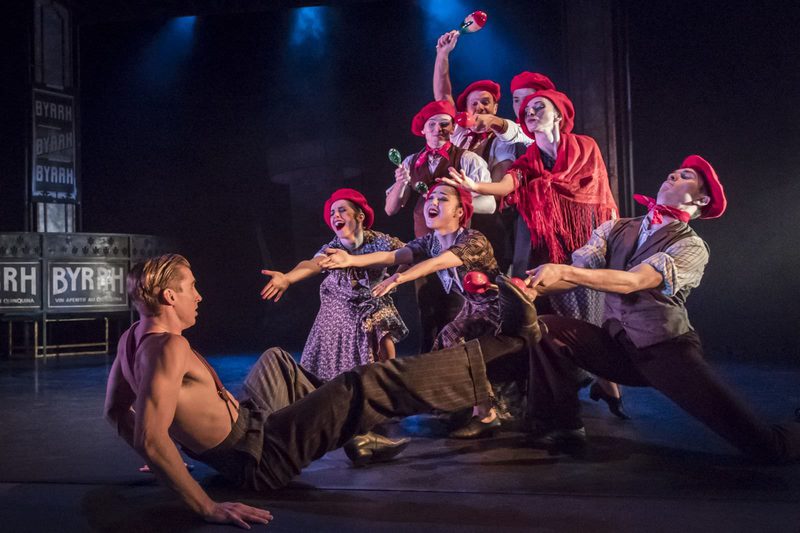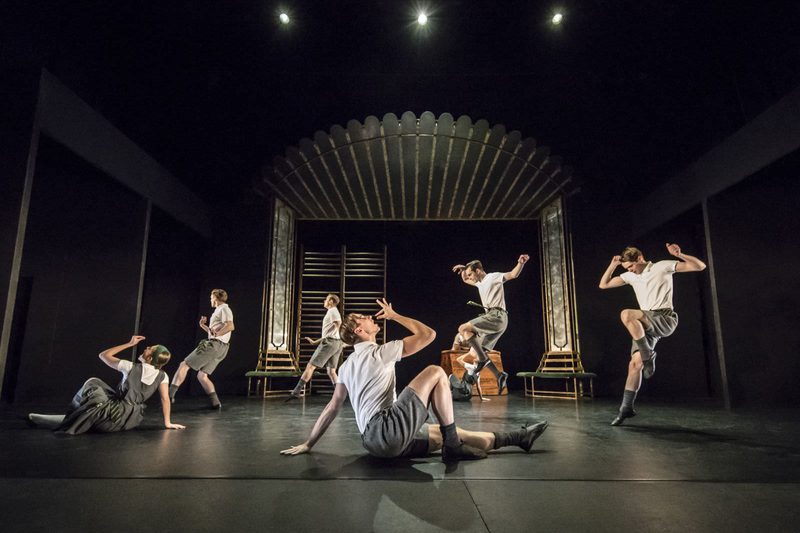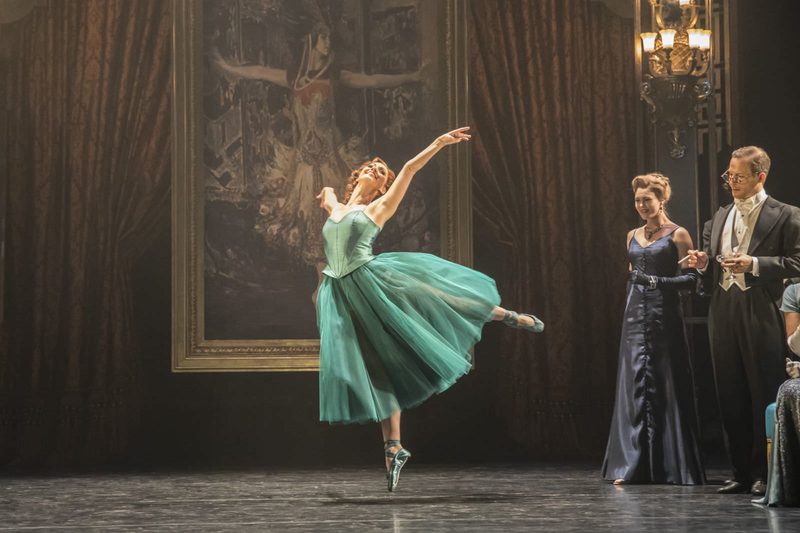
Matthew Bourne's Early Adventures, a programme of Matthew's earliest works, is currently touring England and will also be visiting Madrid and Los Angeles. Read on to find out more about the show in conversation with journalist, Sarah Crompton. For full tour dates and booking information click here.
You’re marking the 30th anniversary of New Adventures with a programme of your earliest works, aptly titled Early Adventures. Tell me a bit about them:
The Infernal Galop was the first revue piece I made, built around the idea of Paris. Its starting point was the music – Charles Trenet’s recording of La Mer. The music was important in Town and Country too, Edward Elgar, Noël Coward and Percy Grainger; we’re having a bit of fun with stereotypical ideas of town and country life from a bygone era. Watch with Mother is based on Joyce Grenfell’s famous “Nursery School” sketches. It’s not been seen in nearly 25 years; I made it when I was training at Laban and it fits in with the world of Early Adventures so I thought I’d give people a chance to see it now.

WATCH WITH MOTHER (PHOTO: JOHAN PERSSON)
What do you feel when you look back at your roots in this way?
These three pieces are very different because they are works that I was in and I made most of the movement on my own body so, that makes them more uniquely mine in a way. You can see in them all sorts of things that became bigger ideas later on: a bit of Swan Lake, a bit of Nutcracker!, a bit of Play Without Words. I was trying out lots of things.
Looking back, I realise that these works were odd even at the time. We already had our own style: there was a lot of humour, lots of nods to popular culture and references to the past. It seemed nostalgic work, coming from so young a person as I was then. But these were all the things I grew up loving. It is very much a representation of me, like someone’s playlist on their iPod.
How big was the company when you were making them?
Six! There were four boys – including me and two girls. Now on tour it will be nine. But the New Adventures company as a whole, including those dancing The Red Shoes, is about 45.
Do you feel this programme links with The Red Shoes, because these early works show the same affection for dance and for the early history of ballet?
Definitely. They spring from work that I really loved – particularly from Frederick Ashton’s early pieces which are so strongly influenced by music hall. I made lots of little vignettes based on works I was watching at the time, combined with all my affection for the movies and theatre.
It’s always been my philosophy to bring together the things I love. Quite often I will carry round something in my head, knowing that I’m going to use it one day. For example, I’ve been dying to do the sand dance in The Red Shoes for years, and when I had a musical hall scene which needed a comic dance, it was perfect. Those are the sort of moments I love and I know the audience is going to love it as well.

ASHLEY SHAW IN THE RED SHOES (PHOTO: JOHAN PERSSON)
When you founded the company in 1987, could you imagine yourself being here 30 years later?
At the time of making these early pieces and doing our first tours I couldn’t have been more happy about how successful we were becoming. To play a studio theatre like The Place in London was a big deal. So I never really thought I want this, I want that. Everything has come as a little bit of a surprise. But the thing I am most proud of over 30 years is that we have stayed an independent company, doing what we do. We are not an institution. It was a big turning point when we found we could make our style work for bigger productions. Yet it quite often feels the same as it did right at the start; not different, just bigger.
Your audience has always been so important for you, hasn’t it?
We wouldn’t be here if the audience hadn’t come along with us and liked what we have done. There were years in the middle period, just after Swan Lake, where if we hadn’t had the audience with us we wouldn’t have survived.
How do you personally feel now that you have been knighted?
I still have to pinch myself when I remember I’m a Sir, and I’ve had a few funny moments – a few students have bowed to me. But I do think it makes people listen and gives you more weight, so I am in a unique place to be some sort of voice for dance. And I feel I understand dance from different angles: I’ve come up through small-scale work so I know what that world’s like and I’ve been in the bigger, more commercially-based world through doing musical theatre. My knowledge is quite wide and I appreciate all forms of dance and dancers.
Do you have plans for the next 30 years?
It’s a funny time to ask me because it always takes me time after a new piece to rev up to the idea of doing another one. I’m looking forward to Cinderella later this year because I love that piece and we have a few plans up our sleeves for things. But actually, I don’t crave more than the company. I love the dancers and developing the dancers. It’s not surprising I started a company because even when I was a child, putting on shows, I always wanted to call it something. I wanted to bring people together to make work. That’s all I’ve ever wanted. I love it.


